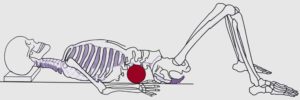
A Reminder to Not Get Too Comfortable With Your Training
I was in the gym the other night going through my standard high-intensity interval training (HIIT) treadmill workout. The workout went fine, but, on this night, I decided to switch things up by adding some battle rope HIIT after the treadmill sprints. I got through the battle rope HIIT without any issues up until the last interval. While performing the last interval, my low back seized up – I couldn’t move and my low back shot up in pain.
To get relief, I had to lay on the gym floor. I did this for about 20 minutes, which was the time it took for the pain to subside. After getting up off the floor, I went home, took a hot shower, went to bed and woke up the next morning fine.
While I’m fortunate I was fine the next morning, this was the first time in about 3 and a half years that I have encountered such a flare-up. The last time I can remember having such a flare-up was when I was getting off an inversion table during my time interning with the Toronto Raptors.
After 3 and a half years of being relatively pain-free – what happened on this incidence?
Well, I can tell you that it was me being careless with my training decisions for my lower back.
To explain. We must first look at battle rope training and how it may affect the low back.
Battle Ropes HIIT
Battle rope HIIT is a form of exercise that involves fluctuating amounts of spinal movement and muscular activation patterns – depending on the style of whip your using.
I was using the alternating whip, which looks like this:
Video Licensed from ” a_medvedkov/depositphotos.com”
In the video above, if you pay attention to the guy’s spine, you will notice that spinal movement is taking place from side to side, as well as rotation. While this spinal movement taking placing may not be a problem for someone with a healthy lower back – if you took someone with degenerative joints and discs in their low back, it could become one.
Video Licensed from “ozguyilmaz.hotmail.com/depositphotos.com”
Looking at the anatomy, I would like you to visualize the degenerative facet joints from the video above. Think about how the facet joints may move after developing degenerative changes. Do you think they will move smoothly like in the video below?
I can tell you – degenerative joints won’t move smoothly.
Performing fluctuating amounts of spinal movement during the alternating whip of battle rope HIIT is going to create some movements at the discs and joints, which the body may not respond to well.
Also, if you factor in fatigue, the technique may start to break down, and the lumbar spine may move more then it should. If you begin to move more at the lumbar spine, this may increase stress onto the low back.
Sticking to a stable spine by properly bracing the core is important during battle rope HIIT. A stable spine will help prevent movement at the lumbar spine, but as fatigue starts to kick in, this could become challenging.
The alternating whip during battle rope HIIT makes for effective cardiovascular and resistance exercise. But the demands on the low back may make this style of training a poor option for someone with a history of degenerative low back problems. Avoiding battle ropes HIIT all-together for someone with existing low back problems may be a smart option.
Don’t Get Too Comfortable with Your Training
I can tell you – the other night I wasn’t thinking “smart,” and I got careless with my training. After 3 and a half years of being relatively pain-free and not encountering any flare-ups in my low back – I got too comfortable with my training, and I recreated my pain symptoms from a few years ago.
Battles rope HIIT with an alternating whip after treadmill sprints is something I should have put more thought into before performing. My low back is not what you would consider “healthy” and simply doing the wrong form of training will put me in pain.
While I am fine now, this moment serves as a reminder as to why you can’t get too comfortable with your training.
Salute,
Remi
Thumbnail Image Licensed from “ArturVerkhovetskiy/depositphotos.com”











